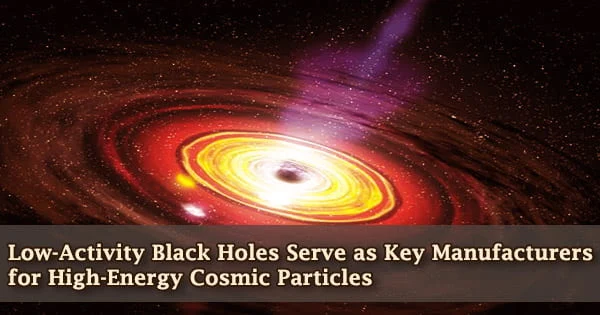X-rays, gamma rays, and neutrinos are among the energetic particles found throughout the universe. However, the sources of the majority of high-energy cosmic particles are unknown.
Now, an international scientific team has offered a theory to explain these phenomena: low-activity black holes serve as primary manufacturers for high-energy cosmic particles. The results of their study were published in Nature Communications.
Gamma rays are extremely high-energy photons with hundreds of times the energy of visible light. Cosmic gamma rays with energy ranging from megaelectron to gigaelectron volts have been discovered by space satellites.
Neutrinos are subatomic particles with a mass of almost nothing. They seldom ever come into contact with regular materials. High-energy cosmic neutrinos were also measured by researchers at the IceCube Neutrino Observatory.
Both gamma rays and neutrinos should be produced in the Universe by large cosmic-ray accelerators or their surroundings. Their origins, however, are uncertain.
The new model demonstrates that gamma-ray and neutrino factories are significant not just in active black holes, but also in non-active, “mellow” ones.
Active supermassive black holes (also known as active galactic nuclei) are thought to be the most promising sources of high-energy gamma rays and neutrinos, especially those with large jets.
Recent research, however, has demonstrated that they do not account for observed gamma rays and neutrinos, suggesting that more source types are required. The new model demonstrates that gamma-ray and neutrino factories are significant not just in active black holes, but also in non-active, “mellow” ones.
Supermassive black holes are believed to exist at the cores of all galaxies. When stuff falls into a black hole, it releases a tremendous quantity of gravitational energy. The gas is heated in this process, resulting in high-temperature plasma.
Because of inefficient cooling, the temperature of low-accreting black holes can reach tens of billions of degrees Celsius, and the plasma can generate gamma-rays in the megaelectron volt range.
Individually, such mellow black holes are dim, but they are numerous in the Universe. The researchers discovered that the gamma rays produced by low-accreting supermassive black holes might contribute considerably to the reported megaelectron volt gamma rays.
Protons can be accelerated to energy 10,000 times greater in plasma than they can be in the Large Hadron Collider, the world’s largest human-made particle accelerator. Through interactions with matter and radiation, the accelerated protons create high-energy neutrinos, which can account for the higher-energy component of the cosmic neutrino data.
The previous study has shown that this image can be used to active black holes. A high percentage of the observed IceCube neutrinos in a wide energy range may be explained by supermassive black holes, which include both active and non-active galactic nuclei.
Future multi-messenger observational programs are crucial to identify the origin of cosmic particles with a lot of energy The proposed scenario predicts gamma-ray counterparts to neutrino sources in the megaelectron volt range.
The majority of present gamma-ray detectors are not calibrated to detect them, but future gamma-ray investigations, in conjunction with next-generation neutrino experiments, will be able to detect them.





